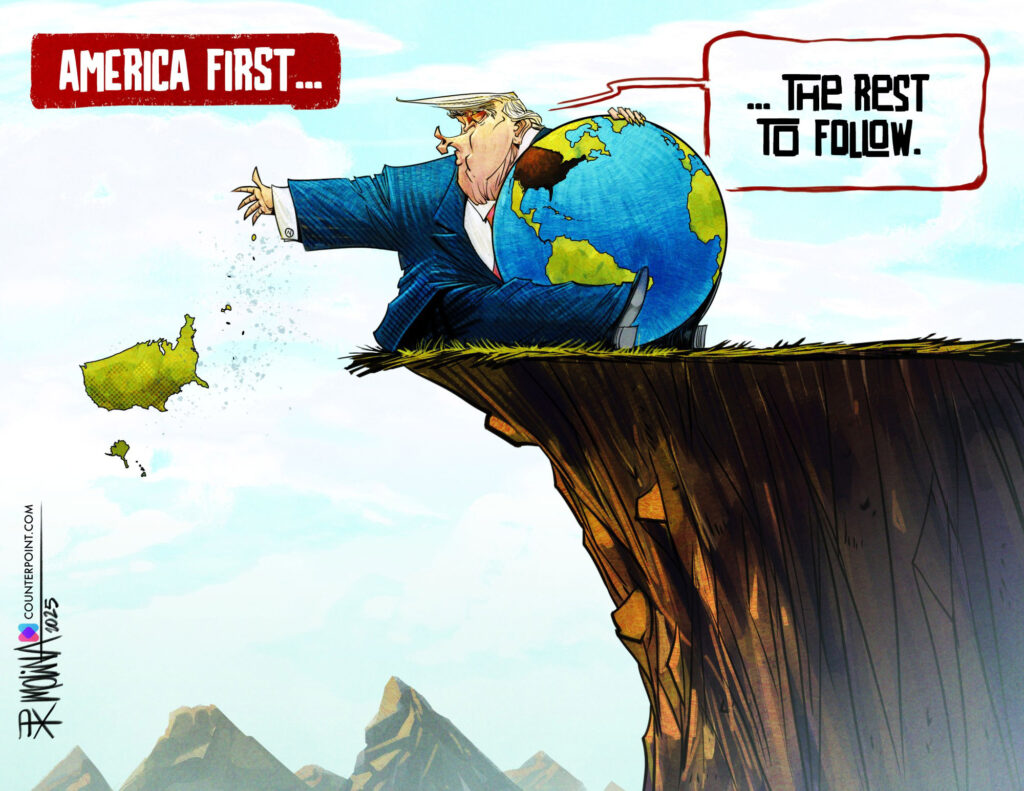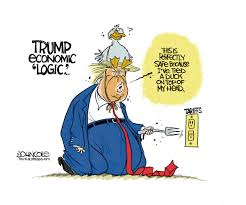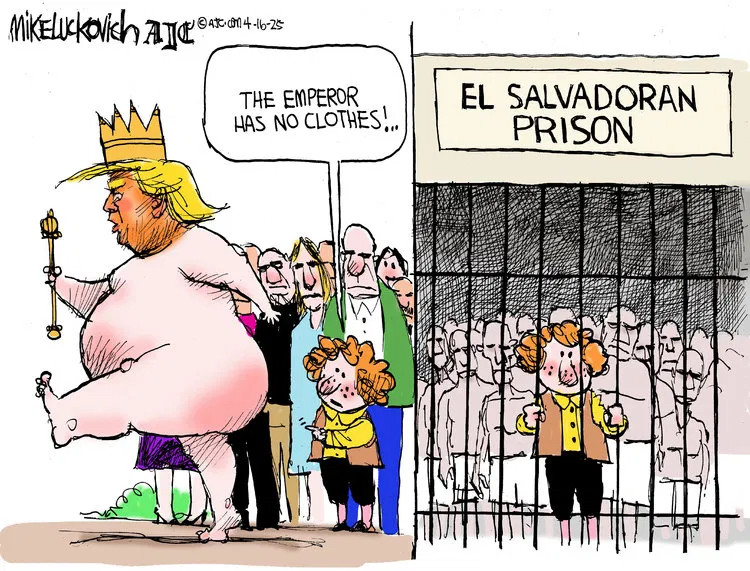There is now an American pope. For what it’s worth. There’s some evidence the new Pope is not a fan of Donald Trump. At least the guy should probably avoid J.D. Vance. Just to be safe.
A bit of good news — the Ed Martin nomination for U.S. attorney for D.C has been pulled. Martin was something of a festering boil in Missouri politics for a lot of years, and the St. Louis Post-Dispatch has been running editorials with headlines like “Missouri Owes America an Apology” and “Ed Martin’s Toxic Road Show Continues.” Unfortunately they’re all behind a paywall. My aunt has been sending me newspaper clippings. Juicy stuff. Let’s just say the guy is not overly burdened with intelligence, competence, or ethics. See also Greg Sargent, Trump Erupts as Top DOJ Pick Implodes in Huge Blow to MAGA at The New Republic.
However, before we celebrate — there is speculation Trump will choose the wackadoo Fox News host Jeanine Pirro for the job.
In other personnel news — Cameron Hamilton, acting head of the Federal Emergency Management Agency, was fired from his job yesterday.
The firing occurred one day after Hamilton told a House Appropriations subcommittee that the nation needs FEMA, which Trump has suggested abolishing or shrinking.
“I do not believe it is in the best interests of the American people to eliminate the Federal Emergency Management Agency,” Hamilton said at the hearing.
The Atlantic Council, among others, has pointed out that abolishing FEMA would hurt Red states more than Blue ones. Although it wouldn’t be good for Blue states, either.
On to tariff news. After bragging that he has negotiated 200 trade deals, Trump finally announced one. Except it’s not a deal, says Paul Krugman.
The Trump administration is planning to announce its first trade deal today, with Britain. Except it won’t be a deal; more of a “deal.” Reportedly it will mainly be a “framework” for an actual deal that may or may not happen sometime in the future. This is the tariff equivalent of “concepts of a plan” for health care.
In other words, this will be smoke and mirrors, an attempt to persuade the gullible that Trump’s tariffs are actually working. Markets — driven by small investors who seem desperate to believe that the people in charge have some idea what they’re doing — may briefly bounce on the announcement.
Most news outlets will dutifully report there is a “trade deal,” as if one deal with one nation is going to mend the disruption Trump has caused.
Even good writers can be wrong. David Dayan wrote yesterday that Senate Dems “caved” and were preparing to rubber-stamp a Republican crypto bill. But they didn’t. Instead, all Dems, plus Rand Paul and Josh Hawley, voted to keep the bill from being voted on in the Senate. For now at least. I take it the bill was intended to create a legal framework for cryptocurrency and provided for a little regulation, although surely not so much regulation that it would interfere with the Trump family’s ongoing crypto currency money grab.
But let’s go back to David Dayan, anyway.
As we reported on Monday, a bill called the GENIUS Act would set up a relatively weak regulatory framework for stablecoins, digital assets pegged to the U.S. dollar and used mostly to facilitate crypto trading. It was almost destined for success, as a significant number of crypto-friendly Democrats, boosted by campaign contributions from the industry, were all set to sign on. But then reports about Trump’s family organization launching a stablecoin, and the United Arab Emirates using it in a $2 billion deal to purchase the digital currency exchange Binance started bubbling up. Suddenly, it seemed like terrible politics for Democrats to effectively rubber-stamp Trump’s crypto corruption.
And so nine pro-crypto Democrats vowed to vote against cloture and maintain a filibuster, thus blocking the bill, without changes. Some assumed that asking to address “concerns” was just a pretext to kill the measure. Others thought that the crypto Dems were just searching for a fig leaf they could use to say that their concerns were addressed and the bill could go forward.
It was the latter.
Sens. Ruben Gallego (D-AZ) and Mark Warner (D-VA) engaged in round-the-clock negotiations with Republicans on the GENIUS Act to get to yes. Earlier on Wednesday, Gallego told MeidasTouch that he wouldn’t let Republicans “jam us and pass bad legislation” without Democratic input. “Don’t try to fuck us on it, that’s not going to happen,” Gallego said. But the language was generally based on trying to get a “good bill” that supposedly protects consumers and investors. Gallego and Warner voted for the initial version of the GENIUS Act in the Senate Banking Committee.
Sens. Gallego and Warner did not respond to requests for comment about the negotiations.
Meanwhile, Democrats engaged in a classic tactic when they want to pass something but the optics are bad: come up with a different bill that will never pass so they can pretend they care. Sens. Chuck Schumer and Jeff Merkley introduced the End Crypto Corruption Act, which would ban the president, vice president, senior officials in the executive branch, members of Congress, and their immediate families from financially benefiting from crypto assets that they issue or endorse, including stablecoins.
And so on. I take it that the vote today was premature; negotiations were ongoing. I also get a sense that the crypto-friendly Democrats may have been spooked by recent news stories of Trump’s blatant corruption, promising top traders of his stupid memecoin access to him and tours of the White House.
Note: Trump really did issue a proclamation calling May 8 World War II Victory Day. Like the Pacific War was just a messy little skirmish that didn’t really matter. I am not celebrating.




